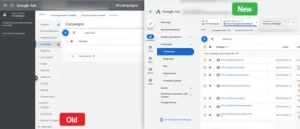In an era where authenticity and transparency are paramount, user-generated content (UGC) has emerged as a powerful tool for building brand trust. Whether it’s a customer review, social media post, or an unboxing video, UGC resonates with audiences because it comes directly from real users rather than the brand itself. This shift toward user-driven narratives redefines how companies establish credibility and foster loyalty.
What Is User-Generated Content?
User-generated content refers to content—text, images, videos, or reviews—created by consumers about a brand, product, or service. Unlike traditional marketing materials, UGC is unsolicited and originates from genuine user experiences. It is often shared on social media platforms, review sites, and forums, making it accessible to a broad audience.
Why UGC Builds Brand Trust
- Authenticity: UGC provides an unfiltered and genuine perspective on a product or service. Consumers are more likely to trust the opinions of their peers than traditional advertisements. A Nielsen study revealed that 92% of consumers trust recommendations from other people over branded content.
- Social Proof: Seeing other people use and endorse a product reinforces its value and credibility. Positive UGC acts as a form of validation, encouraging new customers to trust the brand and make purchasing decisions.
- Relatability: UGC often reflects real-life use cases, making it more relatable than polished ad campaigns. When potential customers see people similar to themselves benefiting from a product, it fosters a sense of trust and connection.
- Transparency: Brands that highlight positive and constructive user feedback demonstrate openness and a commitment to improvement. This transparency enhances trust and positions the brand as customer-focused.
Examples of UGC in Action
- Product Reviews and Testimonials: Websites like Amazon and Yelp thrive on customer reviews. Honest feedback from existing users helps potential buyers evaluate the product’s quality and suitability.
- Social Media Content: Hashtag campaigns like Coca-Cola’s #ShareACoke encourage users to share their experiences. These campaigns often lead to viral exposure and a boost in brand trust.
- Video Content: Platforms like YouTube and TikTok are filled with unboxing videos, tutorials, and product comparisons. These formats are highly engaging and provide valuable insights for potential buyers.
- Community Forums: Brands like Apple and Fitbit have dedicated forums where users share tips, experiences, and solutions, fostering a sense of community and trust.
Benefits of UGC for Brands
- Enhanced Credibility: Featuring UGC in marketing materials increases credibility. For example, embedding customer testimonials on a website can improve conversion rates.
- Cost-Effective Marketing: UGC is free advertising. Encouraging customers to share their experiences reduces the need for costly campaigns while expanding reach.
- Improved Engagement: UGC encourages interaction between customers and the brand. Liking, commenting, or sharing user posts deepens the connection and builds loyalty.
- Increased Conversion Rates: A study by TurnTo Networks found that UGC increases conversions by up to 161%. Potential buyers trust peer reviews and testimonials, making them more likely to purchase.
Challenges of UGC
While UGC has numerous benefits, it’s challenging. Brands must navigate the following:
- Moderation: Not all UGC is positive or appropriate. Brands must actively monitor and filter content to maintain their image.
- Loss of Control: Since UGC is user-driven, brands have limited control over the narrative. Negative reviews or unfavorable content can impact perception.
- Copyright and Permissions: Using UGC in campaigns requires proper permissions to avoid legal issues. Clear guidelines and agreements are essential.
How Brands Can Leverage UGC Effectively
- Encourage Participation: Create campaigns or contests that motivate customers to share their experiences. Offer incentives like discounts or recognition to boost participation.
- Highlight UGC in Marketing: Feature user reviews, photos, and videos on your website, social media, and ads. This showcases authenticity and amplifies positive experiences.
- Engage with Users: Respond to UGC by thanking users or addressing concerns. The interaction shows that the brand values customer input.
- Measure Impact: Use analytics tools to track UGC campaigns’ reach, engagement, and conversion rates. This helps refine future strategies.
Conclusion
User-generated content is more than just a marketing trend; it’s a cornerstone of building trust in the digital age. By empowering customers to share their authentic experiences, brands can enhance credibility, foster loyalty, and drive meaningful engagement. As UGC continues to grow in importance, businesses that embrace and strategically leverage it will be well-positioned to succeed in today’s consumer-driven landscape.
To learn more or to acquire our services, please contact us at https://paypercampaign.com





